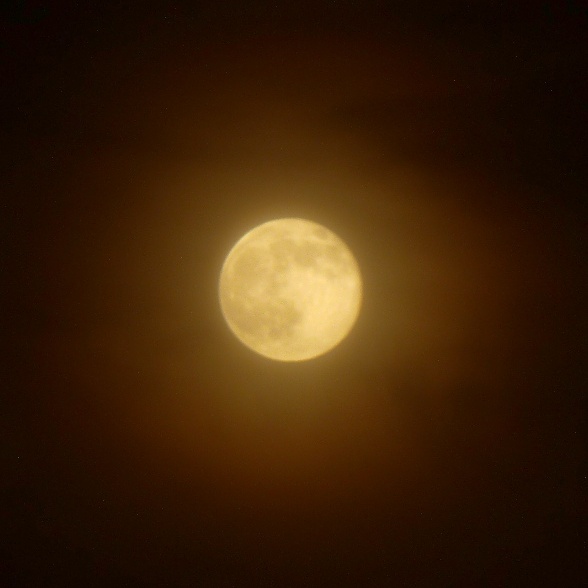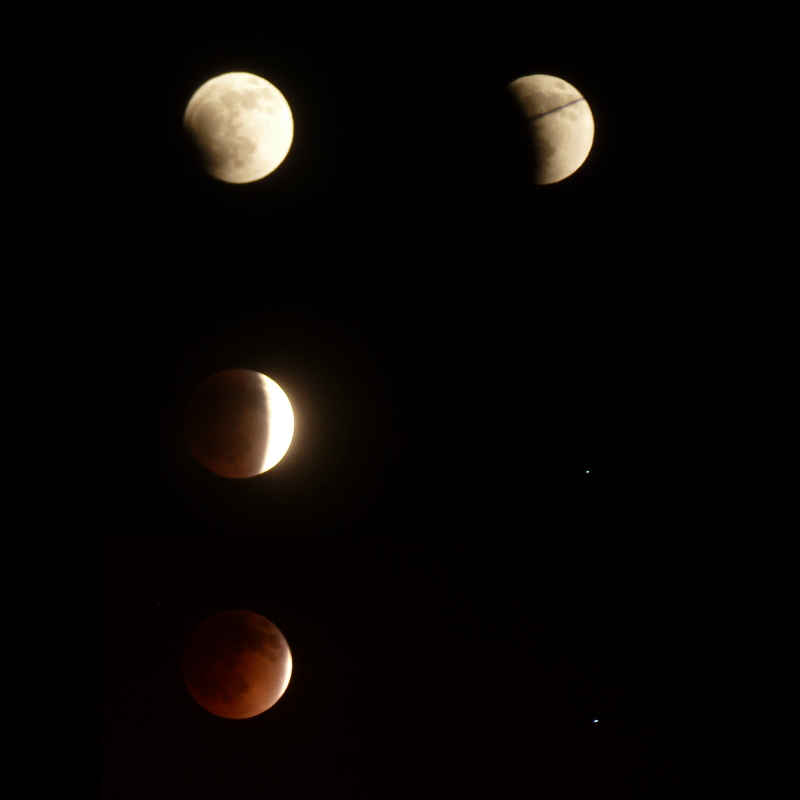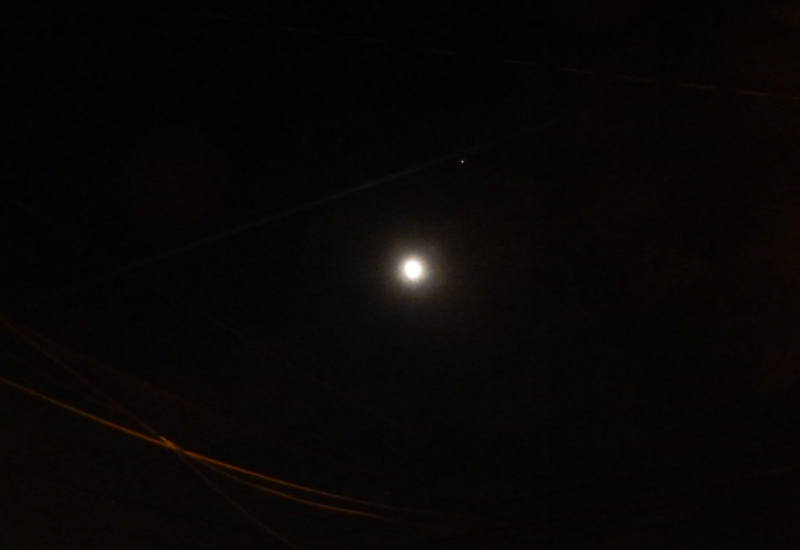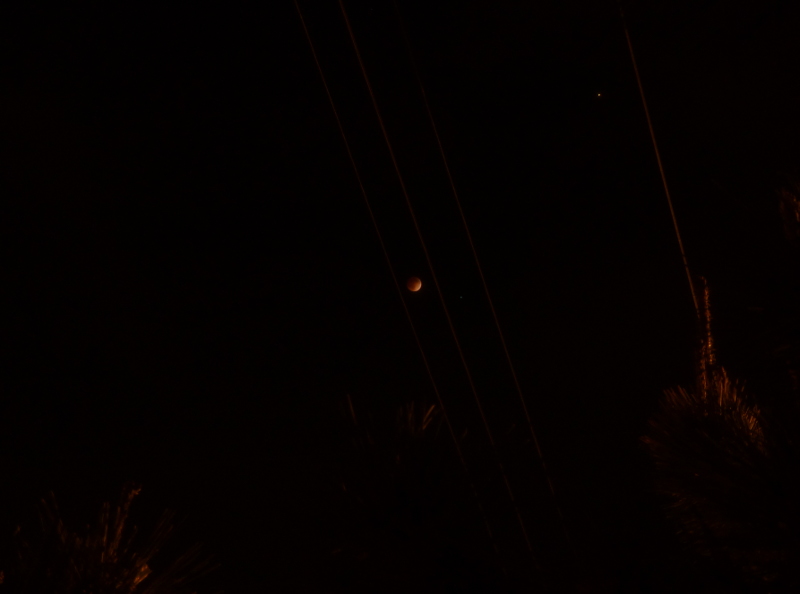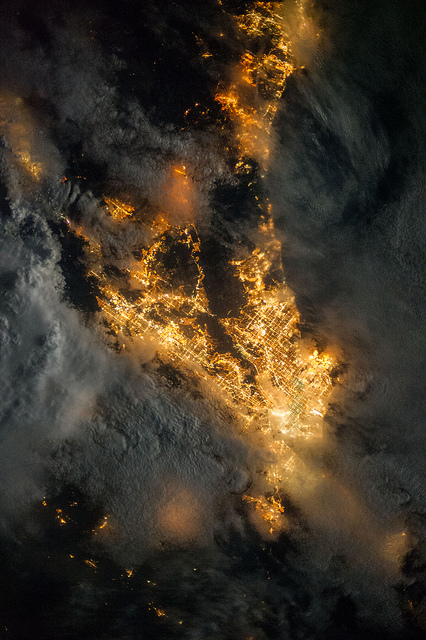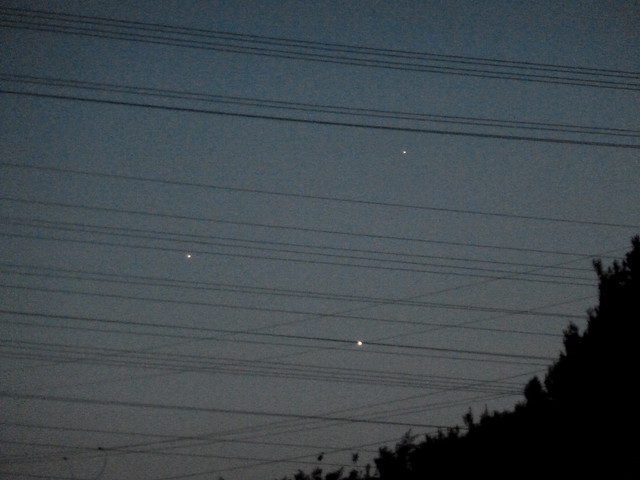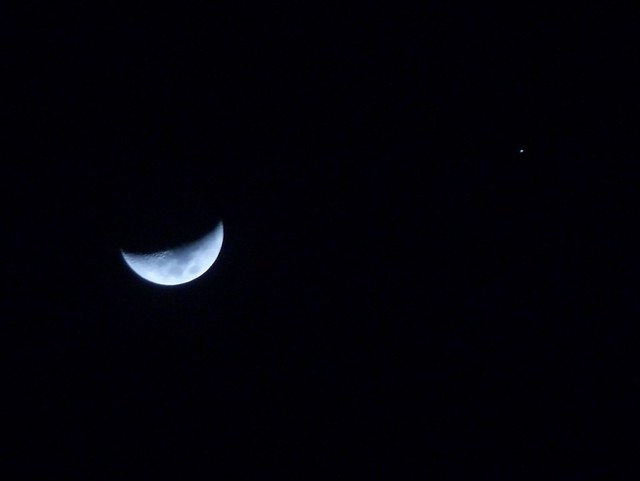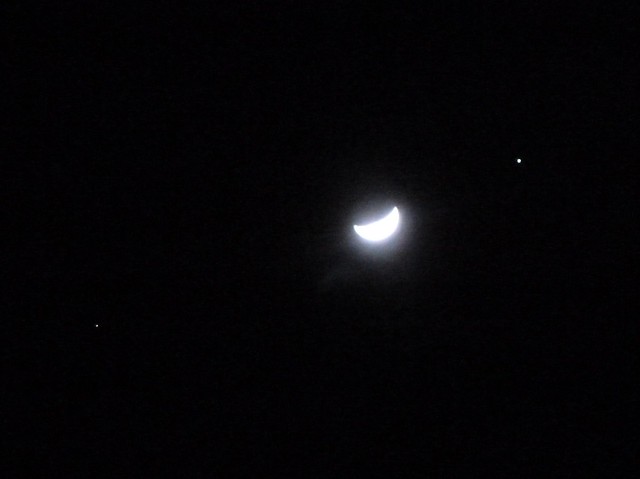The city of Los Angeles recently finished replacing all of its streetlights with high-efficiency LED lights. They use less power, last longer, and require less maintenance than even the sodium vapor lights — an all-around win. They also cast a slightly bluish light, eliminating the amber look of sodium. But my first thought was that with all that work, they could have taken the opportunity to combat light pollution. The night sky doesn’t seem any darker than it did when we moved up to this area.
Then I took a good look at these LED street lights near work. The new fixtures actually do aim all the light downward, shielding upward leakage. They’re plenty bright from the ground, but from a few stories up, I couldn’t tell which lights were on without looking below them to see whether there was a pool of light on the ground.
So if the streetlights really are leaking less light into the sky, why is it still so hard to see stars to the north? Seriously, I can see Orion clearly most nights, but the Big Dipper is practically impossible to pick out.
- It was a city project, not a county one. There are plenty of other cities in the area that either haven’t been converting their lights, or have only converted a few.
- They didn’t actually convert all the streetlights in town, just the standard, boring ones (141,089 of them). Phase 2 is converting decorative street lights.
- There are lots of other lamps that leak light upward: Parking lots, building lights, private roads. LAX is to the north, and there’s a reason for the phrase “lit up light a landing strip.” There’s also a park nearby with a baseball field; those lights drown out quite a bit when they’re on.
- The ongoing drought has caused smog levels to climb, making the skies hazier.
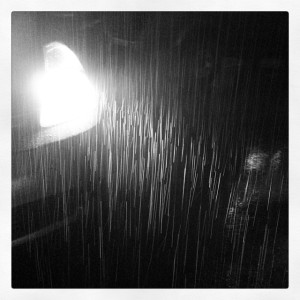 Speaking of the drought, I found myself wondering: How much water would we save if the city did a similar project to replace all the grass along street medians, parking lot boundaries, etc. with drought tolerant native plants? A home lawn at least has a potential use as a gathering place, or a play area. But a little strip of lawn six feet across? What’s the point?
Speaking of the drought, I found myself wondering: How much water would we save if the city did a similar project to replace all the grass along street medians, parking lot boundaries, etc. with drought tolerant native plants? A home lawn at least has a potential use as a gathering place, or a play area. But a little strip of lawn six feet across? What’s the point?
And what do they do with medians out in the high desert, anyway? I remember driving out to Joshua Tree once and noticing in one of the towns along the way that all the houses were built on a standard suburban lot plan with space for a lawn, but that they used it for rock gardens, or native plants, or just left it empty. But I can’t remember what they put along the sides and middles of city streets.
And that gets me to the other article: It was a summary of a study on the vulnerability to climate change in various parts of the region. Most of LA will handle a rise in sea level fine, except for the beaches, Marina del Rey, and San Pedro…but depending on how the climate changes, most of LA would be vulnerable to severe flooding.
In any given decade in California, you can expect at least one drought and at least one winter of heavy rains and flooding. And sometimes those floods can be spectacular. A flash flood in 1825 changed the course of the Los Angeles River (it used to flow into what’s now Marina del Rey). And then there’s the Great Flood of 1862, which covered huge swathes of California and Oregon with water, including all the lowlands of what are now Los Angeles and and Orange County.
So in addition to planning for drought, the region also plans for the occasional flood — unfortunately, by trying to channel all that water out of the way as quickly as possible, because, as the study pointed out, more than 80% of the ground in the area is covered with impermeable surfaces — you know, asphalt, concrete, buildings, etc.
They do have spreading ponds to replenish groundwater from at least part of the storm drain system, but a lot of that water just goes straight into the ocean, and in heavy rains, the ponds get overwhelmed anyway.
It just seems like there ought to be a better way to capture the rain we do get.
